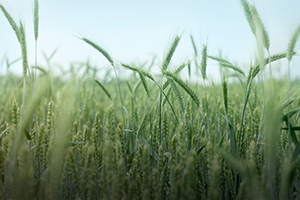Nutrition Scanner
 A new handheld device is designed to help farmers optimize their harvests by providing on-the-spot analysis of a variety of grains. Called GrainSense, it utilizes near-infrared scanning—a technology that has been used for decades in the laboratory—to measure protein, moisture, oil and carbohydrate levels in wheat, oats, rye and barley for better crop management.
A new handheld device is designed to help farmers optimize their harvests by providing on-the-spot analysis of a variety of grains. Called GrainSense, it utilizes near-infrared scanning—a technology that has been used for decades in the laboratory—to measure protein, moisture, oil and carbohydrate levels in wheat, oats, rye and barley for better crop management.
For example, the ability to assess moisture content allows farmers to tweak water levels as the grain matures, while a measure of protein provides important information for monitoring the nutritional content of feed for livestock. Carb levels are an important metric for industrial use (think fuel), and oil content is critical to farmers who grow and harvest seeds for oil.
In comparison to laboratory testing, which can take days or weeks to get results, GrainSense provides readings in about five seconds. It’s also less expensive than laboratory testing. Instead of requiring up to a half-kilo of grain, the handheld device can perform measurements on 50 to 100 kernels. It also records the GPS coordinates for more precise control of fertilization and water needs, and a smartphone app with cloud storage ensures that the data will be available for future analysis as environmental changes become more unpredictable.
The product will be launched in November at the Agritechnica fair in Hanover, Germany. The developers are already planning to add corn and rice to the list of grains that can be analyzed using the device, as well as adapting the technology to measure protein contents in other organic materials, such as meat.
For information: Edvard Krogius, GrainSense; email: edvard.krogius@grainsense.com; website: http://www.grainsense.com/contact